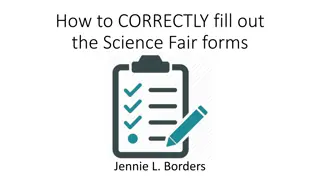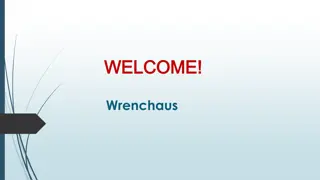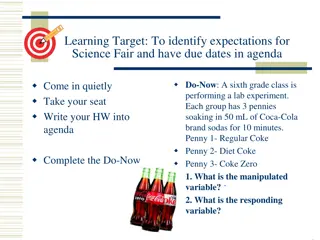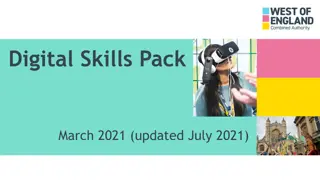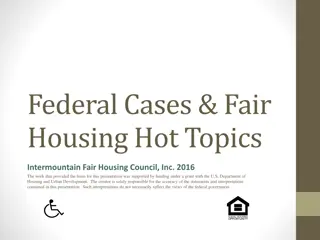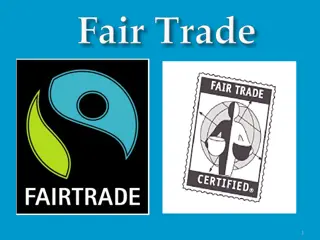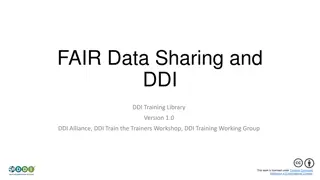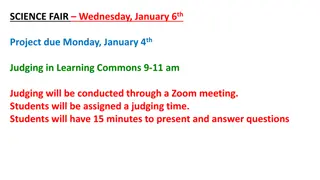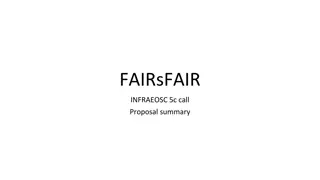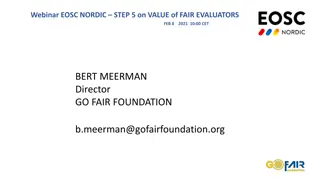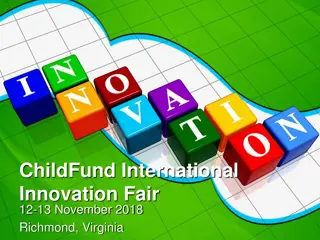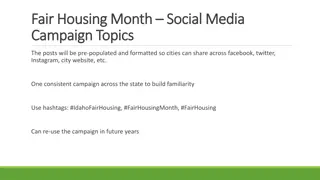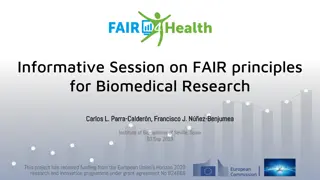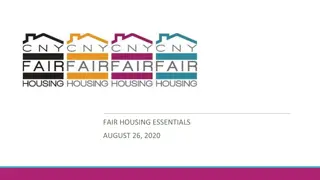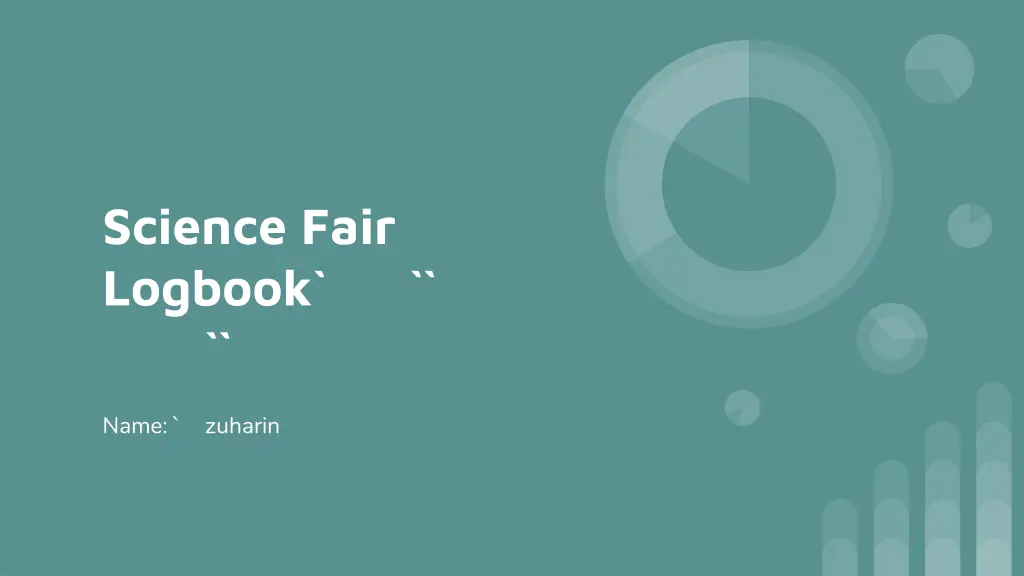
Understanding Paper Airplane Wing Designs for Improved Flight Performance
Explore the impact of wing designs on paper airplane flight through Bernoulli's principles. Discover how lift, drag, thrust, and weight affect the distance a paper airplane can travel. Experiment with different wing designs to enhance flight capabilities.
Download Presentation

Please find below an Image/Link to download the presentation.
The content on the website is provided AS IS for your information and personal use only. It may not be sold, licensed, or shared on other websites without obtaining consent from the author. If you encounter any issues during the download, it is possible that the publisher has removed the file from their server.
You are allowed to download the files provided on this website for personal or commercial use, subject to the condition that they are used lawfully. All files are the property of their respective owners.
The content on the website is provided AS IS for your information and personal use only. It may not be sold, licensed, or shared on other websites without obtaining consent from the author.
E N D
Presentation Transcript
Science Fair Logbook` `` `` Name: ` zuharin
Topic: Write about the topic you chose. Why did you choose this topic? What do you hope to find out? I chose the topic airplanes because i've been into airplanes since I was a kid I just love the creative ways of folding and you don't even need glue or tape that what makes it so easy. so if you're ever in the mood of making something, paper airplanes are a good option.
Testable Question How does _________ affect _________? What is the effect of _______ on __________? Which __________ is/does/makes/etc _______________? Does the wing design affect the distance an paper airplane can travel? I will be testing 3 different types of paper airplanes with different wing designs I will test each paper airplane 2 times for more accurate results I will test them in the same area and will put the same amount of pressure on them I will use the same type of paper and the same length of paper I will only change the wing design of the paper plane I will not change the point so it will be a fair experiment.
Background Information Research your topic and write about what you find out IN YOUR OWN WORDS. Add slides as necessary. Make sure to note your sources of information on the Sources page. Wing designs are really important in when making a paper airplanes because depending on how much you want your plane to stay in the air. According to Bernoulli s principle, Lift is explained: on a plane there is faster moving air on the top of the wing, so lower pressure and on the bottom part of wing there's slow air so more pressure then it makes an upward force on the plane called lift, that is what causes the plane to fly. According to Bernoulli's principle drag is the force thats holding the airplane back or paper airplane back so less drag than farther flight and if there is a lot of drag than small distance the plane will travel. According to Bernoulli s principle, Thrust is the force that's moving the airplane forward so the more the Thrust the farther the flight. The less the thrust the shorter the flight. According to Bernoulli's principle weight is the force pulling the airplane or paper airplane down so more the weight than the plane will not be able to fly, the less the weight the more higher the plane will be in the sky. To make airplanes fly for long period of time you can make the wings wider that helps reduce drag and if on a real plane fuel
Sources of Information Title Author Information (web link, publisher, etc) Year 1998 Yale national Teachers institute Yale National Initiative to Strengthen Teaching in Public Schools curriculum https://teachersinstitute.yale.edu/curriculum/units/1988/6/88.06. 02/4#:~:text=A%20good%20wing%20shape%20is,the%20drag %20on%20the%20airplane. Nasa Bernoulli's Principle | NASA February 9, 2017. Bernoulli s Principle Dan Washmuth Study.com https://study.com/academy/lesson/airplanes-force-thrust-drag- lift- weight.html#:~:text=Drag%3A%20the%20force%20that%20act s,the%20plane%20toward%20the%20ground Nov 21 2023 9th August 2023 Aerospace Testing international https://www.aerospacetestinginternational.com/features/how- and-why-aircraft-wings-will-become-longer-and- thinner.html#:~:text=Longer%2Dspan%20wings%20generally %20reduce,counteract%20their%20intended%20efficiency%20 Ben Sampson
Variables Manipulated / Dependent Variable Responding / Dependent Variable The thing I m changing in the experiment is the wing design of a paper plane. I think the distance will be affected because there are going to be different wing designs. How will you measure it? : I will be measuring it by how far it lands.
Variables Controlled Variables Things we have to be very careful to keep the same every time we test so that they do not affect the results/outcome of the experiment: I have do to it in the same area and I have to have the same size of paper and the same type of paper and put same pressure on each plane
The 3 types of paper planes that I will be making are: Delta Wing Wide Wing Flyer Long Narrow Wing
Hypothesis Your prediction, or what you think will happen: If _________________ then _____________ because __________________. (I do/change this ) (I think this will happen) (Why? ) *use info from your research or background knowledge to help explain) I think the wide wing flyer will travel the farthest distance because it has wider wings so more lift and less drag.
Materials What materials will you use for your experiment? Be specific about amounts whenever possible. Paper Measuring tape Masking tape tape(maybe)
Procedure List the step-by-step procedure you will follow to conduct your experiment. Be as specific as possible and include exact measurements, quantities, times, etc. 1.Make a question 2. Do background information 3. Make a hypothesis 4. Conduct an experiment: Fly each plane See how far each travels 4. Collect the results: Measure which plane flew the most Which plane flew the most 5. Make a conclusion 6. Record your results
Experiment : Trial 1 Date: Data: (measurements) Observations:/Notes The wide wing flew the most distance But all of them flew pretty smoothly And straight so all of them were good planes to fly in narrow spaces Long narrow 8ft 48cm Wide wing 12ft Arrow head 7ft 38cm
Experiment: Trial 1 Photos:
Experiment: Trial 2 Date: Data: (measurements) Observations/Notes: The wide wings did some curves this time but did not hit the wall and the rest of the planes went pretty smoothly Long Narrow 7ft 6.1cm Wide wing 9ft 5.3 cm Arrow head 5ft 9 cm
Experiment: Trial 2 Photos:
Experiment: Trial 3 Date: Data: (measurements) Observations/Notes: This time the long narrow winning went and did some curves but did not crash Into the wall and the rest went smoothly Long narrow 6ft 3.5 cm Wide wing 9ft 9.5 Arrow head 6ft 1 cm
Experiment: Trial 3 Photos:
Results: Chart Put your data together into a chart. Example: (you can change the chart) Trial 1 Long narrow 8ft 8cm Wide wing 12ft Arrow head 7ft 38cm Trial 2 Long Narrow 7ft 6.1cm Wide wing 9ft 9.5 Arrow head 5ft 9 cm Trial 3 Long Narrow 6ft 3.5 cm Wide wing 9ft 9.5 Arrow head 6ft 1 cm
Results: Analyze Look at your data and observations. Look for patterns and trends. Explain what happened in your experiment and what you found out: Everytime the wide wing flew the farthest but in the start I thought I was wrong but then I was surprised when wide wing flew the most. The rest of the planes flew pretty smoothly not bumping into the wall. I thought it would bump into the wall a few times
Results: Graph Graph your data for a visual display of your results. Use Google Sheets or another website and copy the graph onto this slide, or draw by hand and upload a photo. Ask your Science Fair teachers for help if you need it!
Conclusion My question was:Does the wing design affect the distance an paper airplane can travel? The answer to my question is: the wide wing flew over the most distance My hypothesis was correct because: Wide wing had wide wings which put a lot of lift so it travelled the most distance OR My hypothesis was incorrect because:
Applications In what ways are your findings useful? Who could benefit from your results and how? If someone wanted to build a new type of airplane with these results you can tell which plane design is better and has more lift.You could also use this information if you have a school project and you need the plane that travels the most you can have this information so you know that wide wing travels far.
Sources of Error Do you think your results were reliable? Were there any other factors or conditions that could have affected the results of your experiment in unexpected ways? What could have affected your results, that would need to be controlled differently if you were to repeat the experiment? Maybe the paper affected the experiment or the area or maybe the size of the paper or the type of the paper.I think I should have used a paper airplane launcher so it would be more equal, I can't be 100% sure that I put exactly the same amount of force on each paper plane.
Extensions Because of the results of this experiment, I wonder Describe further experiments that could be conducted to further investigate and understand your topic: I wonder which material is better to make a paper plane? I wonder does the size of the paper affect its distance? I wonder how long can different paper planes stay in the air for? Does the nose design of a paper plane affect how much distance it travels? Does the nose design of a paper plane affect how much time it stays in the air?
Extensions If you were to conduct this experiment again, what would you do differently? Maybe do it in a bigger area or use bigger paper or use different type of paper or use different designs
CONGRATULATIONS!! You have completed your experiment! Make sure that you enter information from this logbook into the CYSF Digital platform. You are now ready to create your tri fold display and practice your presentation.


